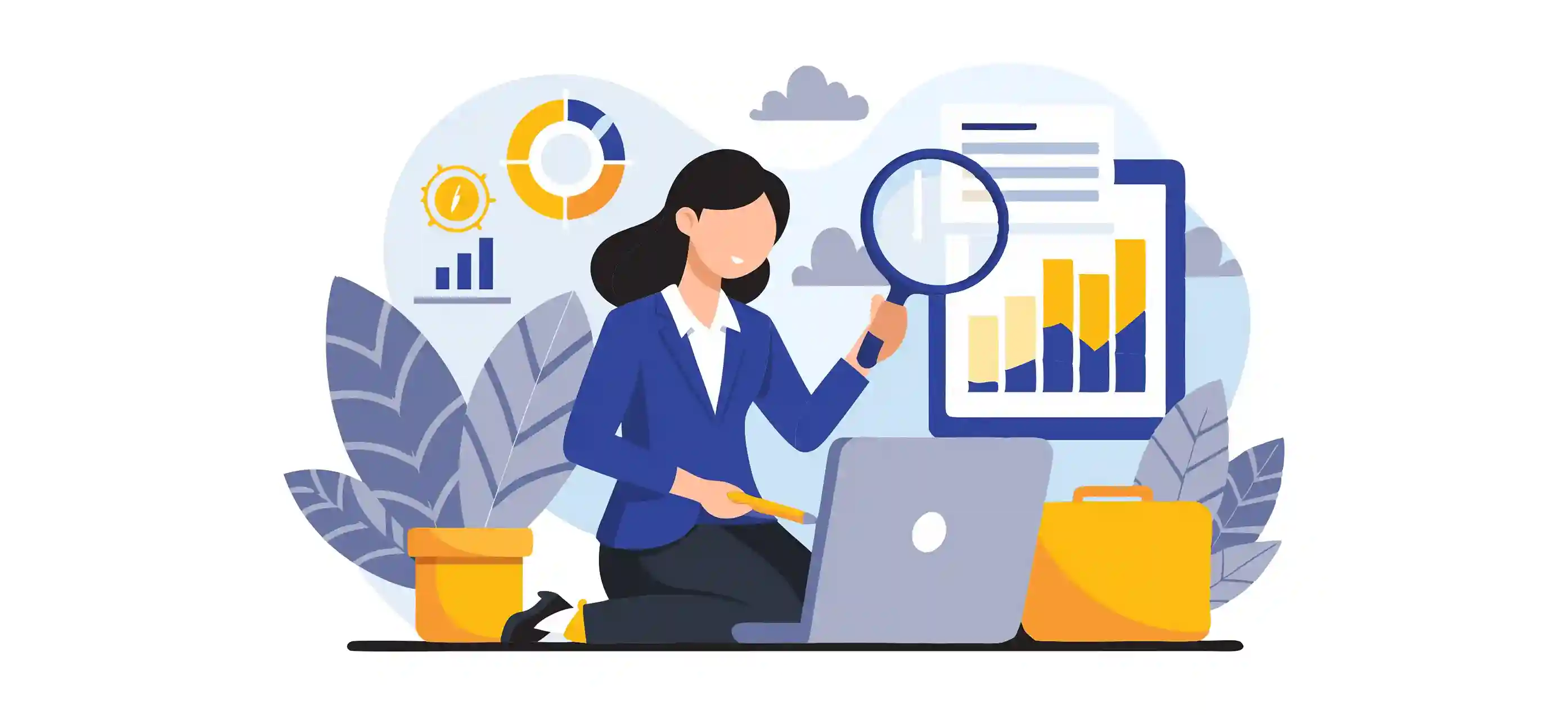 Jothi Kumar
May 13, 2025
Jothi Kumar
May 13, 2025

If data is your area of interest, you have undoubtedly heard of Python, a computer language for many good reasons. Python is not just a popular software, it is also a strong, user-friendly, and developed tool for data analysis. Whether you want to find business insights, create forecast models, or simply automate hard data work, Python has got you covered.
Simple to learn yet incredibly powerful, Python has become the go-to language for data professionals at every level. In this guide, we will look at why and how Python is prominently essential in data analysis and data science, the strengths and limitations compared to alternative tools, and how you can begin developing skills in this high-demand language. Ready to harness the power of Python with data? Let's get into the topic now.
Before understanding the importance of Python in data analysis, let us get an idea about what data analysis is. Data analysis is the process that involves collecting, organising, interpreting, and presenting facts to reveal useful information, suggest conclusions, and aid decision-making. It's not just number crunching, it's converting raw data into clear, actionable pieces of information.If you're looking for consumer trends, assessing business performance, or streamlining processes, data analysis enables professionals to make informed decisions based on real evidence rather than unnecessary assumptions. Here are the four types of data analysis techniques:
By effectively and widely carrying out these analyses, particularly when dealing with huge data sets. This is when essential tools like Python come into play.
Now, let's take a closer look at data analysis vs. data science to gain a better understanding. Data analysis and data science are sometimes used interchangeably, however, they differ significantly in terms of aim, scope, and skill set. The main differences are.
|
Feature |
Data Analysis |
Data Science |
|
Primary Goal |
Analyse past data to find insights |
Predict future outcomes & automate decisions |
|
Scope |
Narrower deals mainly with known data |
Broader involves building new models and systems |
|
Tools |
Excel, SQL, Python (Pandas, Matplotlib) |
Python (Scikit-learn, TensorFlow), R, Big Data tools |
|
Skills Required |
Visualisation, Statistics, and data cleaning |
Programming, machine learning, data engineering |
|
Outcome |
Reports, dashboards, data visualisations |
Predictive models, AI solutions, algorithms |
In simple terms, data analysis is a subset of data science. Analysts concentrate on describing the "what" and "why," whereas data scientists construct predictive models to find "what's next."
Python plays an essential role in data analytics training because of its vast library, readability, and adaptability. Its powerful libraries, such as Pandas, NumPy, and Scikit-learn, make data processing, numerical analysis, and machine learning easier. The language's simplicity and readability make it suitable for a wide range of skill levels, and its open-source nature ensures free access and a friendly community. Let’s break down the reasons why.
Python is famous for its readability and simple syntax, so it's easy to learn for beginners. Even if you don't come from a programming background, you can begin using Python relatively quickly. This ease of entry is one of the reasons it's so popular in data positions.
Python's true strength is in its massive libraries that make data operations easy. These are those tools:
These libraries significantly cut down development time and reduce the complexity of coding tasks, allowing you to focus more on insights.
Data visualisation allows you and your audience to understand complicated data sets better. Through libraries such as Matplotlib, Seaborn, and Plotly, Python allows you to produce:
This makes it easy to communicate findings to both technical and non-technical stakeholders.
Python enables you to automate time-consuming tasks, such as data cleaning, formatting, and report generation, which saves time and minimises the likelihood of human error.
For example, you can write a script that:
Python plays well with almost everything:
This versatility makes Python a practical and future-proof choice for any data professional.
Python has a huge, active community. Whether you are debugging an issue, searching for tutorials, or contributing to open-source software, you'll never be alone. Sites like Stack Overflow, GitHub, and Reddit are full of Python gurus waiting to assist you.
Some Additional Thoughts on Python
With its wide usage and widespread industry support, Python proficiency makes you extremely desirable in the marketplace. |
Are you ready to start learning Python? Here’s a step-by-step guide for beginners who want to enter the world of data science or data analysis.
As a beginner, it is essential to build a solid foundation before diving into Python for data science. To achieve this, you should focus on the following:
After becoming familiar with the basics of Python, it's now time to go through the libraries that power data science.
The third phase is to clean and alter datasets to extract insights, which should be done as follows:
After you clean your data, you're all set to begin learning how to predict.
Apply your knowledge with real-world projects like:
Upload your projects to GitHub, write blogs on Medium, or publish notebooks on Kaggle. Showcasing your skills online increases your credibility and helps you network.
Python’s flexibility allows you to use it in a wide range of data-related job roles, such as:
Check this blog to learn more about the data science job path: A Complete Guide to Data Science Career Path
Python is not only a programming language, it's a doorway to the world of data. From trend analysis and visualisation of results to the development of machine learning models, Python enables professionals to unlock value from data in meaningful and efficient ways.
Whether you're a beginner to data or looking to enhance your skills, Python is an essential skill to learn to remain valuable in a data-driven world.
Getting started? Learn Python today and open the door to infinite career possibilities in data science and data analysis.

Software and IT Trainer
Jothi is a Microsoft-certified technology specialist with more than 12 years of experience in software development for a broad range of industry applications. She has incomparable prowess in a vast grouping of software development tools like Microsoft Visual Basic, C#, .NET, SQL, XML, HTML, Core Java and Python.
Jothi has a keen eye for UNIX/LINUX-based technologies which form the backbone of all the free and open-source software movement. As a Big data expert, Jothi has experience using several components of the Hadoop ecosystem, including Hadoop Map Reduce, HDFS, HIVE, PIG, and HBase. She is well-versed in the latest technologies of information technology such as Data Analytics, Data Science and Machine Learning.